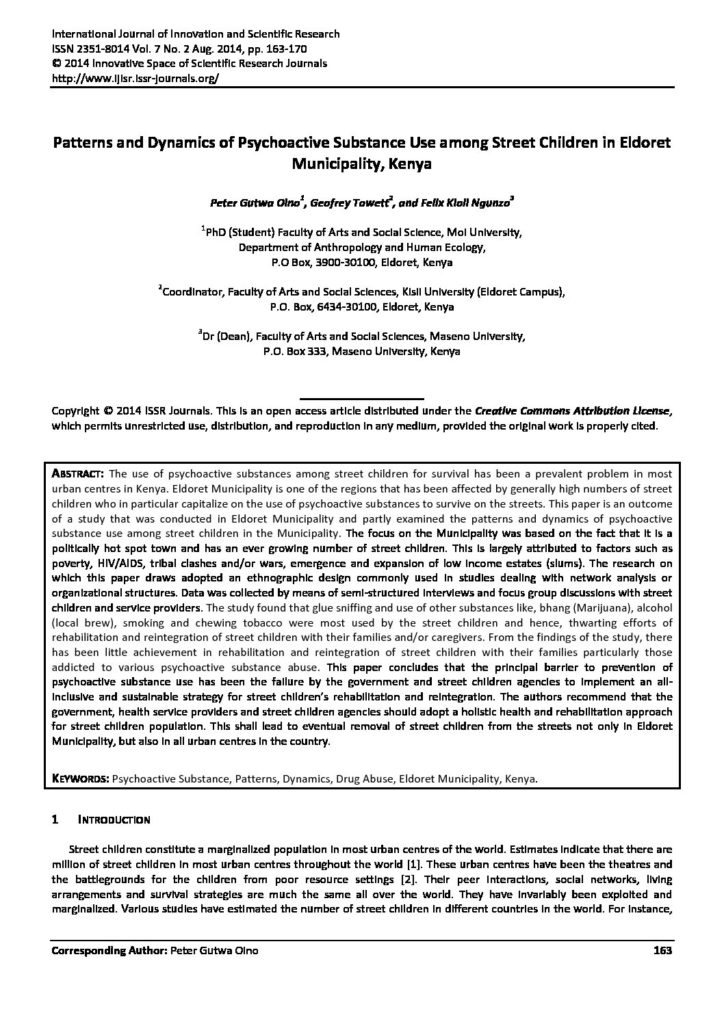
Patterns and Dynamics of Psychoactive Substance Use among Street Children in Eldoret Municipality, Kenya
Summary
This open access article is published in the International Journal of Innovation and Scientific Research. It is distributed under a Creative Commons Attribution License.
The use of psychoactive substances among street children for survival has been a prevalent problem in most urban centres in Kenya. Eldoret Municipality is one of the regions that has been affected by generally high numbers of street children who in particular capitalize on the use of psychoactive substances to survive on the streets. This paper is an outcome of a study that was conducted in Eldoret Municipality and partly examined the patterns and dynamics of psychoactive substance use among street children in the Municipality. The focus on the Municipality was based on the fact that it is a politically hot spot town and has an ever growing number of street children. This is largely attributed to factors such as poverty, HIV/AIDS, tribal clashes and/or wars, emergence and expansion of low income estates (slums). The research on which this paper draws adopted an ethnographic design commonly used in studies dealing with network analysis or organizational structures. Data was collected by means of semi-structured interviews and focus group discussions with street children and service providers. The study found that glue sniffing and use of other substances like, bhang (Marijuana), alcohol (local brew), smoking and chewing tobacco were most used by the street children and hence, thwarting efforts of rehabilitation and reintegration of street children with their families and/or caregivers. From the findings of the study, there has been little achievement in rehabilitation and reintegration of street children with their families particularly those addicted to various psychoactive substance abuse. This paper concludes that the principal barrier to prevention of psychoactive substance use has been the failure by the government and street children agencies to implement an all-inclusive and sustainable strategy for street children’s rehabilitation and reintegration. The authors recommend that the government, health service providers and street children agencies should adopt a holistic health and rehabilitation approach for street children population. This shall lead to eventual removal of street children from the streets not only in Eldoret Municipality, but also in all urban centres in the country.
Discussion
Users can discuss this report and make suggestions for future updates. You must be signed in to submit a comment.
No comments
Join the conversation and
Become a Member Existing member loginbecome a member.